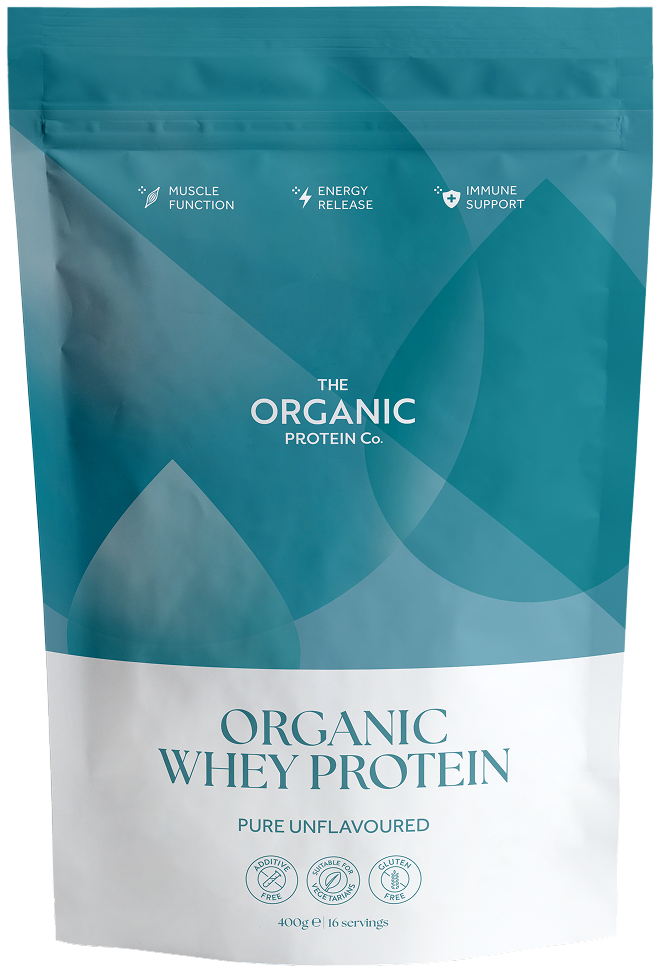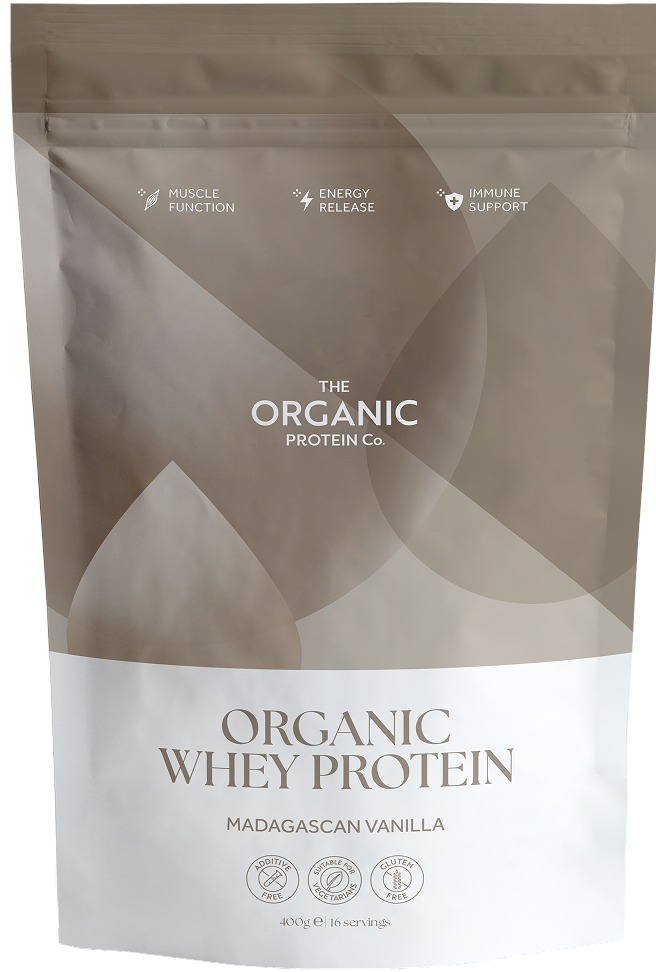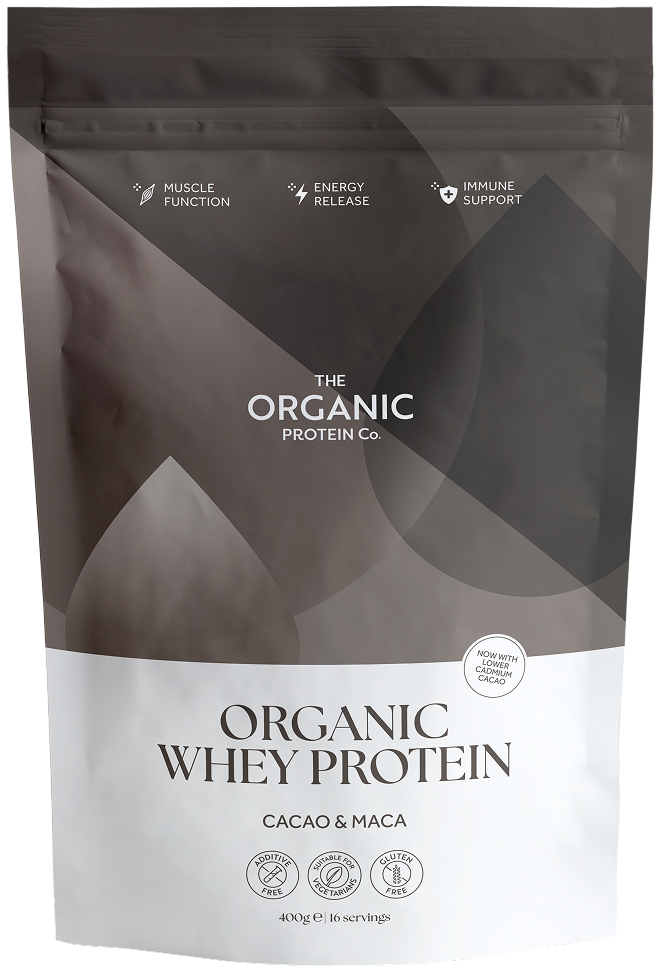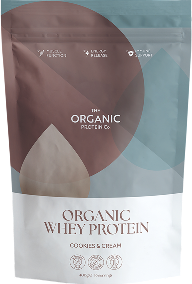Protein supplements are growing in popularity. But as concern intensifies about climate change and sustainability, questions are being asked about the environmental impact of the different proteins we consume.
Understanding how the carbon footprint of dairy protein is calculated, and how whey protein compares to other protein sources, can help you make informed decisions about your dairy protein supplement.
Why the Carbon Footprint of Protein Supplements Matters
Understanding the carbon footprint of protein supplements helps consumers and producers make informed choices that balance nutritional benefits with environmental costs.
How food production contributes to climate change
Agriculture is a major contributor to global greenhouse gas emissions, through sources such as enteric fermentation in livestock (producing methane), manure management, fertiliser usage (nitrous oxide), land-use changes, and energy consumption. In many countries, agriculture represents a significant share of both methane and nitrous oxide emissions.
Why protein sources are closely scrutinised
Protein-rich foods tend to have higher resource needs. Animal proteins often require more energy, feed, land and water per gram of usable protein when compared to plant protein.
Because of this environmental footprint, protein sources – including supplements – are often subject to frequent assessments and reporting.
How Dairy Protein Supplements Are Produced
To assess environmental impact, it’s useful to first trace how dairy proteins are made – from farm to finished powder.

The role of dairy farming in whey and casein production
Whey and casein are both proteins derived from milk as part of dairy farming. Around 80% of the protein in milk is casein, with the remaining 20% being whey protein.
Across the world, farmers are tending to approximately 270 million dairy cows. There is a foundational environmental cost because of the carbon footprint linked to dairy farming such as methane emissions, manure, and fertilisers. Unsustainable farming practices can also cause damage to wetlands, forests, and prairies, with poor practices polluting water sources or impacting soil health.
Processing stages that add to emissions
It’s not only the farming practices that are linked to emissions. After milk is collected, it is transported to a facility ready to undergo several transformative stages, each of which uses energy. This might include pasteurisation, fermentation, filtration, concentration, and spray-drying. Once in powdered form, the powder is packed ready for transportation. Packaging materials may add further emissions.
A life cycle assessment (LCA) – an evaluation of the environmental impact of a product – will consider most, if not all, of these stages.
Carbon Footprint of Dairy Proteins
It’s possible to look at the environmental impact of dairy farming and the production of whey and casein compared to other animal proteins, including meat.
Greenhouse gases from dairy cows
Dairy cows emit methane via enteric fermentation, a natural process in which microbes in their rumen (one of a cow’s stomach compartments) digest feed and produce methane. Alongside methane, other gases – nitrous oxide and carbon dioxide – are also produced during manure management, feed production, and energy use by farms.
How dairy protein compares with other animal proteins
Compared to animal proteins derived from the meat of cows, sheep or pigs, dairy proteins generally have a much lower carbon footprint per gram of protein.
The average greenhouse gas emissions for beef are 99.48kg CO2 equivalent per kilogram of product. For lamb and mutton, it’s 39.72 CO2 equivalent per kilogram of product.
In comparison, the average emissions for milk are 3.15 CO2 equivalent per kilogram of product.
It is important to note that these figures do not constitute a full LCA as emissions later in the supply chain – after the product leaves the farm, which could involve processing, transportation and packaging – are not included.
Life cycle assessments of whey
Some LCAs report that whey protein can have emissions of around 1.5-17kg CO2 equivalent per kilogram of dried whey, depending on farming systems, transport, and energy sources. When whey is treated as a by-product of cheese production, however, its footprint looks relatively modest.
Dairy Protein vs. Plant-Based Protein: Sustainability Comparison
It can be helpful to compare plant and dairy proteins to understand how sustainable dairy proteins really are.

Carbon footprint per gram of protein
Plant proteins like soy, pea and rice often have lower greenhouse gas emissions per gram of protein, especially when grown in efficient systems without deforestation. The carbon footprint estimates vary widely, with LCAs placing soy and pea protein at 1-12 CO2 equivalent per kilogram of product.
When whey is considered a byproduct of cheese-making, some LCAs disregard the carbon footprint of producing the milk itself. In these studies, whey protein becomes responsible for smaller greenhouse gas emissions than plant-based protein sources.
Land and water use differences
Compared to plant protein crop farming, dairy farming generally uses more land and water. For dairy farming, land is needed for both pasture and the production of feed, and fresh water is needed for the cows themselves, as well as for producing their feed and for cleaning purposes.
However, it is important to remember that although growing crops may require less land than raising animals, you can’t grow crops everywhere. Some land (like hilly, rocky, or poor-quality soil areas) will not be suitable for crop farming. In these places, raising animals can still make good use of the land, and may even help the environment by maintaining grasslands, supporting biodiversity, or preventing overgrowth of certain plants.
Trade-offs for plant proteins
Plant proteins are not automatically low impact. In some regions, soy cultivation leads to deforestation, monocropping can reduce biodiversity, and high fertiliser use can lead to nitrous oxide emissions and water pollution.
Processing to isolate, dry, and transport the protein also adds to emissions. Sustainable plant protein production therefore requires good agricultural processes and supply chain transparency.
Packaging and waste in supplement supply chains
Whether dairy or plant-based, supplements often come in plastic tubs or packets, with single-use scoops. These packaging choices have an environmental impact, especially if international shipping is required.
Discarding by-products, and waste elsewhere in the supply chain, can also increase the overall environmental footprint.
Reducing the Carbon Footprint of Protein supplements
There are multiple strategies that can help to reduce the environmental toll of dairy protein supplements at farm, processing, product design, and packaging levels.
Sustainable dairy farming practices
A guide commissioned by the WWF states that improving feed efficiency and manure management, combined with rotational grazing and better grass mixes, can lower greenhouse gas emissions per litre of milk.
Cleaner production and renewable energy in processing
Factories that dry whey powders could switch to renewable energy, improve dryer efficiency, or optimise filtration and separation methods to reduce energy input.
Using cleaner energy sources upstream for feed production, and downstream for processing and packaging, will help to reduce total emissions.
Role of packaging innovations and local sourcing
Using more sustainable packaging, such as recycled, biodegradable, and lower-plastic choices, can all cut emissions. Sourcing materials locally and reducing transport distances will also help.
Avoiding overpackaging and reducing shipping weights by choosing more concentrated forms can also help.
How Consumers Can Make Sustainable Choices
Consumers can influence sustainability through what they buy and how they manage protein in their diet.

Choosing transparent brands with carbon reporting
Some brands publish life cycle assessments, use carbon footprint labelling, or share sustainability reports. Transparency around where milk comes from and farming practices is valuable.
Look for certifications
Certifications can signal lower environmental impact. This could include organic certification, which has stricter rules around animal feed and the use of pesticides and fertilisers. You’ll see organic certification on all whey powders at The Organic Protein Co.
Indications around the use of pasture or grass-fed systems, low-carbon footprint labels, and third-party sustainability certifications can also signal lower impact for the environment.
Reducing personal dietary carbon footprint through balance
Individuals can lower their dietary contribution to greenhouse gas emissions by:
- Using supplements in moderation, avoiding overuse
- Mixing protein sources
- Using plant proteins
- Reducing animal protein intake overall
- Consuming whole food sources
Find out more about food sustainability
There are lots of positive, simple changes you can make to your diet and eating patterns. The Association of UK Dietitians has released reference guides to help individuals develop eating patterns that support their health and environmental sustainability, as well as tips for making favourite meals more sustainable.
Final Thoughts: Balancing Nutrition and Sustainability
Ultimately, finding a balance between the health and nutritional benefits of dairy protein supplements and their environmental cost is key.
Dairy proteins (casein and whey protein) have carbon footprints due to farming, processing, packaging and transport. However, whey protein tends to have a lower impact per gram of protein than many meat-based proteins, especially when it is considered a by-product of cheesemaking. In some cases, whey protein also compares favourably or similarly with plant proteins.
Whey protein has nutritional advantages with its complete amino acid profile and good digestibility. However, the source of the whey and the processing methods affect both the quality and environmental impact of the product.
Becoming a more sustainable consumer doesn’t mean giving up dairy protein. Instead, it means choosing brands and products with better environmental practices, eating whole food sources of proteins, and supporting innovations that reduce the carbon footprint of dairy protein production.
Find out more about our range of Whey Protein here - every blend is certified organic using whey from pasture grazing cows. No additives, no flavourings, and no UPF.















